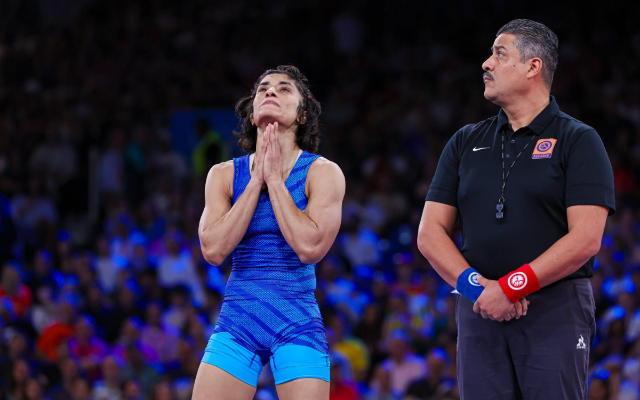
There is a reason why there are weight classes in combat sports. For the most vivid example, look no further than the Mike Tyson-Michael Spinks heavyweight world title bout in June 1988. Spinks had fought his first 27 professional fights as a light heavyweight. The maximum weight allowed in that category is 79kg. By the time of the Tyson fight, he had bulked up to 96kg. He also had an 11cm height advantage. Tyson, then three days short of his 22nd birthday, was a human wrecking ball, 99kg of pure menace and muscle.
The fight lasted 91 seconds. It was an annihilation. Had Spinks mercifully not been counted out, he wouldn’t be with us today. Tyson fought like one of the great heavyweights of all time, Spinks like a tall, thin man whose extra muscle couldn’t disguise the fact that he still punched like a light heavyweight.
The opposite wouldn’t have been true. Tyson, who was only 5’10”, could easily have dropped down to cruiserweight (maximum weight of 91kg) and absolutely obliterated his opponents without losing much power. This is what United World Wresting (UWW) and every other governing body for combat sports tries to stop. A wrestler whose natural weight is 57kg will almost always be physically more imposing than someone who nudges the scales at 50kg on a normal day.
In that sense, you could say that Vinesh Phogat, who had won her Commonwealth Games gold in 2022 at 53kg, already had a bit of an advantage over the opposition. But by making the weight at the first weigh-in, she fulfilled her part of the bargain. Things got much murkier after that.
No two wrestlers have the same path. Over the course of the Olympics, several wrestlers spent barely 10-12 minutes on the mat to make the final. They either had favourable draws, or injured opponents, or even walkovers. Vinesh got no such favours. Across the space of less than eight hours on August 6, she beat three highly rated opponents back-to-back, including the previously invincible Yui Susaki.
In between those bouts and after, it wasn’t as if she slipped off to McDonald’s to have a Big Mac with extra cheese. Whatever she imbibed was the bare minimum needed to sustain herself after 18 gruelling minutes of intense combat against some of the best in the business.
What happened after that was a perfect storm of misfortune. Why was the gym in the Athletes Village operating at Arctic temperatures? Elite sportspeople were using it to work up a sweat. It wasn’t meant for the neighbourhood uncle and aunty to stroll on the treadmill while checking their Instagram posts. Also, why on Earth was the sauna kept closed at night? The very point of having one is for athletes to use it when needed.
The weigh-in on the second morning was equally illogical. The final was fought in an evening session that started at 7:15pm. Why would you insist on the second weigh-in before 7:30am when the athletes who had made the final had three bouts under their belts and needed all the rest they could get? In a sensible world, the weigh-in would have been closer to noon, or even later.
It’s most amusing to see social media experts – some of whom would probably wheeze while trying to lift a toothpick – comparing Vinesh unfavourably to Aman Sehrawat, who apparently managed to shed 4.6kg in the hours before his second weigh-in. You need to be a special kind of idiot to compare the anatomy and physiology of a 29-year-old woman with a 21-year-old man.
Also, while we’re on Sehrawat, consider this. His opponent for the bronze medal, Darian Cruz, didn’t even have to fight the repechage after his Iranian opponent gave him a walkover. Think about it. One less fight, far more time to recover. If anyone thinks that 100g of weight is a bigger advantage than that, they’re a buffoon.
UWW put these rules in place with the best intentions, apparently to safeguard athletes’ health. But the way they’re being implemented, without an iota of common sense, make a mockery of that idea.




